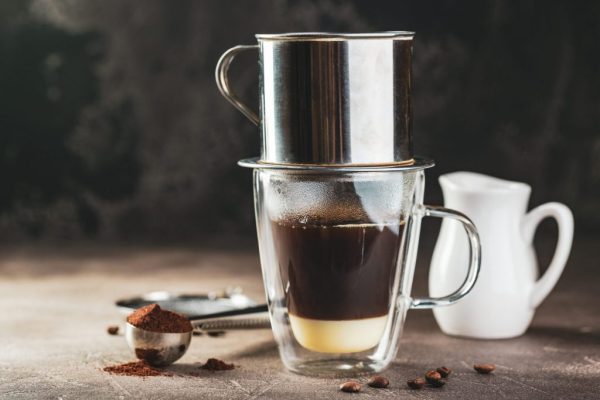Vietnamese coffee is coffee produced in Vietnam. It is the second most-consumed coffee globally, right after Brazilian coffee. Anyone who has consumed this coffee will agree that it should be served with a warning like ‘if you plan to sleep tonight, try it in the morning.’ This is because of how strong it is, especially for first-time consumers. The big question among many consumers of this coffee is why it is so strong. In this guide, we have highlighted some of the major reasons behind the strength of Vietnamese coffee.
What Does Strong Mean?
First, let us start by understanding what is meant by coffee being strong. It is a general term that refers to two aspects of coffee: taste and caffeine content which are not the same. A cup of coffee may have a strong taste but low caffeine content and vice versa. On the other hand, Vietnamese coffee has both a strong taste and high caffeine content, according to consumers. For this reason, many people have been eager to know the reason behind the strong taste of coffee.
There are several reasons why Vietnamese coffee is so strong, as follows.
Beans
The type of beans used to brew the coffee determines its taste. Vietnamese coffee is brewed from Robusta beans which have a high caffeine content compared to Arabica beans. Vietnam is the biggest coffee grower, and the main type of coffee grown is Robusta. However, this does not mean that the country does not grow Arabica coffee. Arabica beans are also grown in the country, but they are rare. Robusta coffee has a strong and bold flavor with a high caffeine content double the caffeine levels in Arabica. This is the main reason behind the strong taste of Vietnamese coffee.
Brewing Method
Vietnamese coffee is made using a small metal drip filter called a phin. It is usually a stainless steel filter that you place over a mug or glass. The filter has tiny holes at the bottom that allow the coffee to go through. Since the grounds are relatively coarse, they will not go through, although there may be some coffee particles in your mug if the grounds are inconsistent. If the coffee grounds are too small, it may end up in your cup and clogging the filter. Therefore the grind used is medium coarse. This traditional brewing method usually takes quite some time, between 3-5 minutes, for a small mug. This means that the method allows more time for the water to soak up all the coffee flavors as compared to a coffee maker with a paper filter.
Roast
How the beans are treated also impacts the taste of the coffee. The roasting process uses additives like clarified butter to balance out the Robusta beans’ rough and bitter taste. This gives Vietnamese coffee a much more rounded and smoother taste. Cocoa and some tiny bits of vanilla are some other additives that help round up the taste, take out the unpleasant edges, and create more depth. Some roasts even use sugar. However, in most coffee, you will not recognize the taste of these additives, only the smooth and more rounded taste. Lastly, the roast is usually on the darker side. This lowers the acidity and produces coffee with a full taste. It also produces coffee that is thicker after brewing by making the beans drier. Many people prefer drinking their coffee milk, which is why the roast is dark.
Location
The location where the coffee is grown in the world also impacts its taste. Temperatures, soil type, climate, and elevation determine the taste of the coffee. Therefore, the coffee produced in one place may not be the same as that produced in another place. This means one of the main reasons Vietnamese coffee is so strong compared to others is that it is grown in Vietnam.
Conclusion
All the factors mentioned above are the reasons behind the strong Vietnamese coffee. However, Robusta beans used have the biggest impact on the taste of the coffee. Robusta beans have a very high caffeine content, double the content of Arabica beans. The beans’ location follows this and then the brewing method used. The longer it takes to brew the coffee, the more flavors are derived from the beans—the brewing method used, however, influences the taste to a large degree and not the caffeine content.

